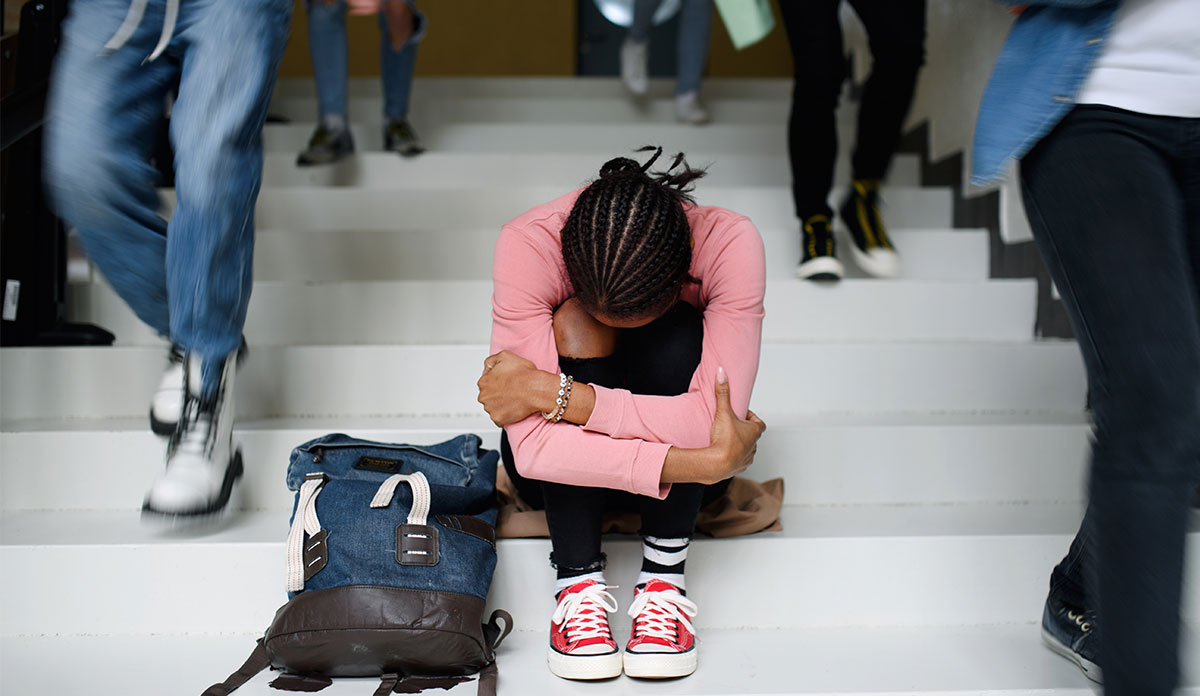In October 2021, the American Academy of Pediatrics declared a state of emergency in child and adolescent mental health. They cited social isolation and stress created by the COVID-19 pandemic as underlying causes. With now over a million COVID deaths reported in the U.S., how many more deaths have been from mental health causes?
Marie-Laure Charpignon and her team partnered with 14 state public health departments to compare deaths attributed to suicide in the four years leading up to the pandemic (2015-2019) to suicide deaths documented in 2020. In most states studied, the overall count of adolescent (age 10 to 19) suicide deaths increased, with averages rising from 835.6 suicide deaths per year to 903, and the overall proportion of suicides occurring among adolescents rose from 5.9% to 6.5%.
The study authors speculate that the pandemic took a unique toll on youth. Research has shown that social isolation is associated with increased rates of depression in children and adolescents, and data comparing youth mental health symptoms from before and after the COVID outbreak implicate the pandemic as a potential culprit for these increases.
The authors urge more data analysis to understand how this effect may differ by race and ethnicity, but there is already strong evidence that suicidality is increasing among Black kids compared to kids in other racial groups. Suicide rates among young (ages 5-11) Black children are twice that of White children in the same age group. Among teens and young adults, suicide rates among Black youths rose from 2013-2019 while they decreased in other groups. LGBTQ adolescents of color may be especially at risk of a suicide attempt.
The pandemic exacerbated already increasing disparities in youth suicide rates according to race and resource access.
The pandemic exacerbated already increasing disparities in youth suicide rates according to race and resource access. Prior studies have found that people from high-poverty communities are more likely to die by suicide. Racial minorities are overrepresented in the essential workforce who cannot isolate at home and are therefore more likely to be exposed to the virus. Kids attending schools that closed during COVID had worse mental health outcomes than kids whose schools remained open. Older children, children of color and children from lower-income families were most likely to experience school closures.
More than 140,000 children lost a primary and/or secondary caregiver during the pandemic. Youth of color are disproportionately impacted; African Americans and Latinos are overrepresented among cases of and deaths from COVID. The researchers recommend better suicide risk assessment training among school social workers and mental health professionals and expanded bereavement counseling for adolescents who have lost caregivers.
Children’s primary access to mental health care is from school psychologists or counselors, who are in short supply. Some data indicate that self-efficacy and problem-solving skills may have served as a protective factor for youth mental health symptoms during the pandemic. Youth might benefit if counselors address controllable factors associated with pandemic stress and instill confidence over the control they do have. Other preventative measures could include reducing access to lethal means in homes and reducing financial stressors on families.
In their state of emergency declaration, the American Academy of Pediatrics recommended increased federal funding to improve youth’s access to mental health screening, diagnosis, and treatment, with an emphasis on under-resourced populations, school-based mental health care, and suicide prevention. In March 2022, The Department of Health and Human Services announced nearly $35 million in funding opportunities through the Substance Abuse and Mental Health Services Administration and Office of Minority Health for expanded community and school-based mental health services and suicide prevention programs for American youth.
The funding will go toward increasing the number of trained professionals that kids can turn to for mental health support in school, community, and family-based mental health programs. It will also support suicide prevention among college students, tribes, and Black youth, and trauma-informed care for youth and young adults at high risk for psychosis.
If these measures work, young lives will be saved.
Photo via Getty Images














